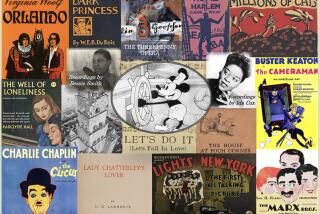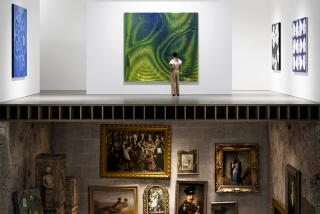Can ‘Art Public’ Be Extended to Include ‘General Public’?
I appreciated Christopher Knight’s engaging discussion of the museum blockbuster phenomenon (“The Lure of the Blockbuster,” Aug. 20). But I found disturbing his repeated references to an “art public” and a “general public.” These condescending classifications undermine the very issue Knight was trying to promote--that of life imitating art.
How can life begin to be intimately connected to art when a line is drawn between the public? Is the “art public” somehow more in tune with art while the “general public” just wants to buy it? And how does one neatly fit into these distinct camps? Do you have to know particular artists or have a certain education to gain membership into the “art public”?
It seems to me Andy Warhol was trying to break down these perceived divisions with his work, and somehow I don’t think he would mind if the “general public” spent $1.65 million on magnets and key chains with his Elizabeth Taylor on them.
DAVID Du MARS
Los Angeles
*
One of the primary objectives of a museum is to educate all art constituencies, not just members of the art public who are “scattered here and there.” After all, if the museum wants to pursue the “real money,” isn’t it prudent to provide a means to increase the size of the art public by exposing, cultivating and integrating the general public into the world of art?
ELIZABETH Z. GOODWIN
Santa Monica
More to Read
The biggest entertainment stories
Get our big stories about Hollywood, film, television, music, arts, culture and more right in your inbox as soon as they publish.
You may occasionally receive promotional content from the Los Angeles Times.










